A davit is originally is a special safety device especially for ships. It is most often used for supporting and lowering life boats and other small vessels from big ships. In facade access, the idea is the same: the davit is used for supporting, raising, and lowering BMU-cradles or modular suspended platforms (MSP’s). With this blog post you will get to know the Davit system and its possibilities.
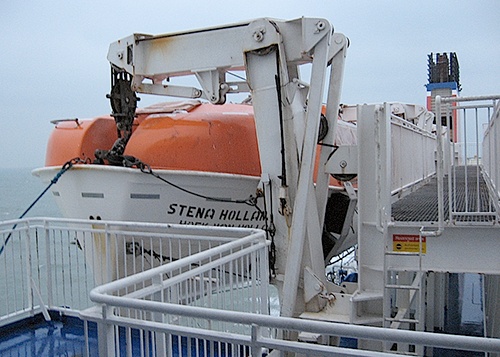 |
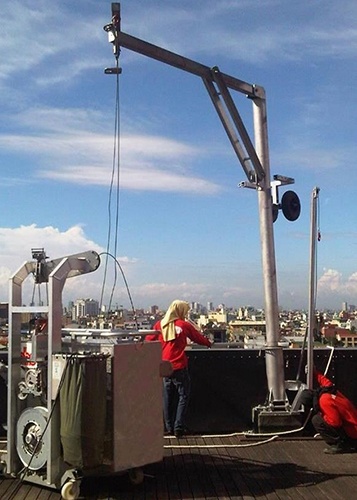 |
| A traditional davit with a lifeboat | A davit on a building roof |
What is a Davit?
A davit looks like a simple and small crane or gallows. In order to move whatever is hanging from the davit, a hoist is needed in the hanging part (e.g. BMU-cradle). A davit system consists of two main parts: the portable davit arm and the base plate or pedestal. The davit arm consists of the visual part of the davit and the base is basically a metal plate mounted to the roof in which the davit arm is attached to.
When the davits are used for facade access, one or two davits are used. One davit is enough if there is a small 1-hoist BMU-cradle hanging from it. However, if there is larger 2-hoist BMU-cradle or a modular suspended platform, davits are needed for each end of the platform.
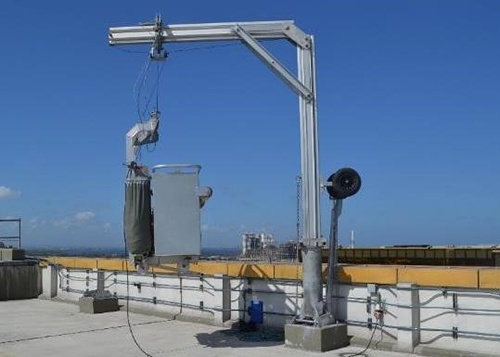 |
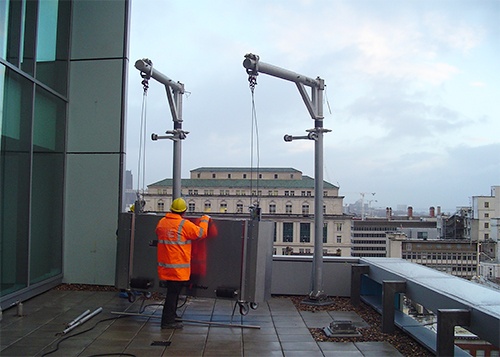 |
| 1-hoist BMU cradle on one davit | 2-hoist BMU cradle on two davits |
When is the davit system the best solution?
Davits are usually one of the cheapest alternatives for facade access. This means it is usually suitable for the simple buildings. The davit system is invisible from the ground level as it is movable and thus can be stored away when not in use. The davits usually have wheels to make them easy to move. Erecting and lowering the davit is also made as simple as possible for quick and efficient access.
Often the davits are used together with a long modular suspended platform, making it possible to access even 40 feet (12 meters) wide parts of a facade in one go before the davits are moved to a new location. The long platform makes the davits an efficient option for simple, straight facades. High buildings with a small perimeter are often well suited for davits. When the work is done, the platform is stored at ground level or lifted to the roof, where it can be stored together with the davits.
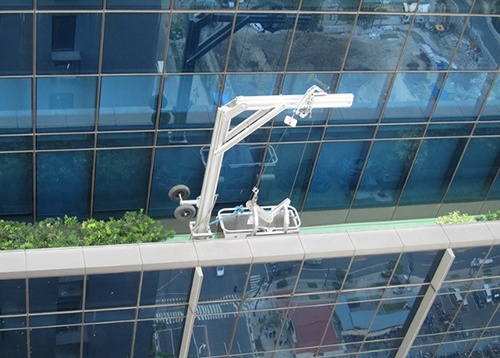 |
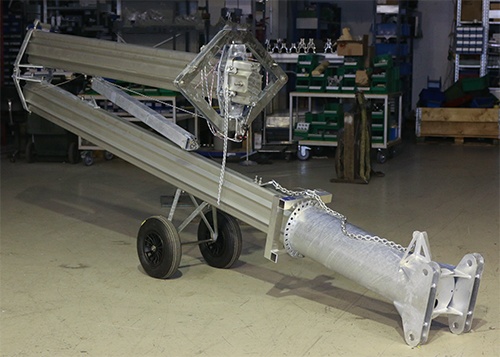 |
| Davit hidden behind parapet | A davit folded and ready to be moved |
When is the davit system not a suitable solution?
The biggest problem with a davit is that it is not traversing. This means that the davits need to be manually moved. Therefore, the davit system is not a good solution for a building with long facades as it needs to be moved too often. The davit system might not be suitable if the roof is curved or inclined. The main reason for not choosing a davit system is that the building is too complex and there are not enough straight facades. For more complex buildings, much more efficient facade access systems are monorails, roof trolleys or roof cars.
Is the davit system the best solution for your building? Get in touch with us and we will help you to choose the best facade access system for the building. Menwhile get to know to our two models of davits by reading our datasheets:



